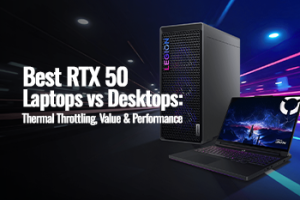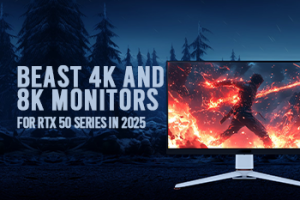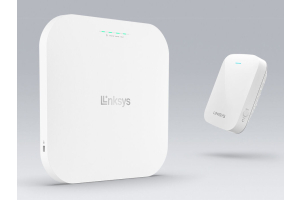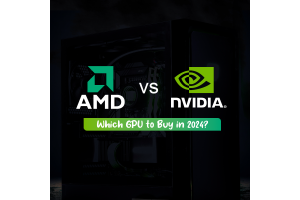RTX 5090 Cooling Guide: Best Air & Liquid Cooling Solutions
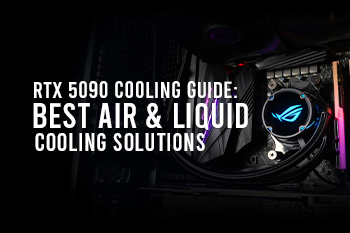

Thanks to powerful Blackwell architecture and GPU cores, the RTX 5090 is undoubtedly one of the high-performing GPUs on the market. However, the flip side of this performance is the power requirement, making it one of the most power-hungry GPUs ever made. Needless to say, RTX 5090 generates a lot of heat, and if this heat remains unaddressed, it can lead to a reduction in clock speed, hurting the performance of this high-end NVIDIA GPU. Though GeForce RTX 5090 comes with an onboard cooling mechanism that may be a double or triple-slot solution, you must give serious consideration to which external cooling mechanism best serves your interest. In this regard, buyers have to decide between air-cooled RTX 5090 or liquid-cooled RTX 5090.
Both air and liquid-cooling solutions have pros and cons. Air-based cooling mechanisms are simple and effective plug-and-play solutions, offering cost-effective cooling to keep the temperature of RTX 5090 within a prescribed range. However, they are not as effective as liquid-based cooling solutions. With a liquid cooling mechanism in place, you can dissipate heat more effectively, expect silent cooling and enhanced clock speed, and consequently, optimal performance of your RTX 5090 GPUs. But liquid-cooled GPUs demand more space, and they are quite expensive. Given these advantages and disadvantages, among others, it becomes very difficult for gamers and content creators to choose the top cooling for their GPU.
Worry not!
In this article, we are going to discuss the top air and liquid cooling for the RTX 5090 UK version. We will also be touching upon the best methods to cool RTX 5090 effectively in addition to sharing our top RTX 5090 AIO cooler and air cooler recommendations to help you enjoy optimum RTX 5090 cooling for overclocking and preventing RTX 5090 overheating.
Before moving ahead to make an in-depth comparison between air and liquid cooling, we would like to dwell upon RTX 5090 Cooling Requirements.
RTX 5090 Cooling Requirements:
Here are many characteristics of NVIDIA GeForce RTX 5090 that make it extremely important to install a reliable and effective cooling solution for this power-hungry GPU.
-
TDP or Thermal Design Power:
Thermal Design Power represents the maximum heat that a graphics card generates, and TDP also indicates how powerful and effective a cooling system one needs for effective temperature management. RTX 5090 have a 575W TDP, which is 28% higher than what the GeForce RTX 4090 has. It should be noted that 575W is just an educated guess, and it represents actual power consumption under lead. The higher the TDP, the higher the heat output, and it necessitates a more advanced cooling system.
-
Power Draw & Impact on Thermal Load:
Given the fact that RTX 5090 is designed to perform high-end tasks such as 4K gaming, 4K/8K video editing, or 3D rendering, it draws significant power, reaching as high as 610W under heavy load. Excursions or brief increases in power demand beyond the continuous power delivery limit of the connector are also a major concern. Various tests show that GeForce RTX 5090 can deliver up to 627.5 W for 10 ms to 20 ms durations; up to 738.2 W in 5 ms to 10 ms durations, up to 823.6 W in the 1 ms to 5 ms category, and up to 901.1 W in spikes under 1 ms in duration.
Though these power spikes are well within the prescribed ATX 3.1 specification that can support up to 200% of the rated limit for very short periods, however, they can stress both the power delivery system and the PSU. Therefore, you need a reliable cooler to ensure stable cooling and a robust power supply to prevent RTX 5090 overheating and ensure RTX 5090 thermal throttling prevention.
-
PCB Design & Cooler Compatibility (Founders Edition vs AIBs):
Both Founders Editions of RTX 5090 and Add-in-Board (AIB) GPUs differ significantly in terms of power delivery, cooling mechanism, and thermal & electrical performance.
PCB Design of Founders Edition:
NVIDIA’s Founder Edition graphics cards are ranked as one of the most powerful GPUs ever made, consequently, NVIDIA has come up with a Unique Printed Circuit Board or PCB design. It features a main PCB that houses a GB202 GPU, 32GB of GDDR7 memory, and a 30-phase voltage regulating module (VRM).
In addition, the main PCB is compact as compared to the previous generation RTX 4090, and the Foundation Edition comes with a 12V-2x6 power connector. This power connector can provide up to 55A of power to feed graphics cards drawing up to 600W on a 12V auxiliary rail.
More importantly. Founder Editions supports 14 PCB layers, significantly improving the thermal and electrical performance, and allowing users to ensure effective NVIDIA RTX 5090 Founders Edition cooling.
PCB Design of Add-in-Board or AIB GPUs:
Though the existing cooling mechanism offered by Foundation Editions of RTX 5090 can provide a satisfactory level of cooling for optimum performance, some AIB partners, including ASUS, MSI, and Gigabyte’s RTX 5090 variants with enhanced and distinct cooling systems.
For instance:
Some AIB partners offer triple-fan setups, vapor chambers, and liquid cooling options to ensure more effective thermal output management.
Others choose to add dual connectors instead of single 12V-2x6 connectors available in 5090’s Foundation Editions. What’s more, some manufacturers also add a more robust Voltage Regulatory Module or VRM, allowing users to provide sustained and higher power delivery.
Is Stock Cooler Performance Enough?
This is a pertinent question and is often asked. Users are particularly curious whether the advanced cooling mechanism available in the Foundation Edition of RTX 5090 is enough for optimum performance. The answer is not simple.
You should note that the Foundation Edition of the stock version of RTX 5090 is designed to handle 575–600 W TDP. However, you have very little margin for error here. Any minor airflow obstruction or disturbance in built-in cooling can lead to RTX 5090 thermal throttle and an adverse impact on performance. Even AIB water-cooled RTX 5090 models that come with dual connectors and advanced coolers can sometimes become dangerously hot. Therefore, it is not advisable at all to use air-cooled RTX 5090 models when you are using them in not-so-well-ventilated settings.
In conclusion, if you are running a stock version of RTX 5090 (also, known as the Founder edition) in well-ventilated settings, the stock cooling would be sufficient for your needs. However, overclocking or use in compact cases demands robust liquid-based or other aftermarket cooling solutions.
Having discussed the importance of a reliable cooling solution to avoid thermal throttling and overheating, we make a detailed comparison between air and liquid cooling solutions so that you can make a well-informed decision.
Air Cooling Solutions vs Liquid Cooling Solutions:
Here is an in-depth comparison between air and liquid-based cooling systems for RTX 5090 and other Graphics Cards.
Air Cooling for RTX 5090 UK:
Air cooling solutions use heaters and deploy fans to dissipate heat from the GPU or CPU. Air coolers for RTX 5090 and other GPUs offer great performance, and they can handle easily the AAA games. They are cost-effective and essentially plug-and-play devices.
They also occupy less space and don’t require sophisticated maintenance at all. Air-cooled GPUs are thus extremely convenient to install. They are a single piece of hardware; all you need is to plug them into the motherboard and plug in your power supply cable.
Here are our RTX 5090 Air cooler recommendations to help you choose the right cooling solutions for your GPU.
On the flip side, air-cooled GPUs are not suitable for heavy workloads. They can cause thermal throttling and below-par performance.
Air-cooled GPUs can ramp up loudly under heavy load, in particular, high TDP GPUs such as RTX 5090 or GeForce RTX 5080 can produce a noise level that may prove quite annoying. They are not aesthetically appealing as either.
In conclusion, air-based cooling is suitable for use cases where cost, simplicity, and reliability are priorities. They are also suitable for applications where airflow is excellent and where there is a non-overclocked setup.
Liquid Cooling Solutions for RTX 5090:
Compared to air-cooling solutions, liquid coolers are advanced and rely upon a closed-loop system with liquid coolant. They are capable of dissipating heat more effectively than air-based coolers. They comprise a specialized block that sits on the GPU, it takes away heat from the GPU and transfers it to the coolant. Pumps circulate the coolant and direct it to a radiator where fans dissipate the heat.
Similar to air-based cooling solutions, Liquid cooling also has some advantages as well as drawbacks. Let’s discuss them one by one.
Liquid cooling solutions offer superior heat dissipation. They can maintain optimum RTX 5090 temperature and are a great choice for higher boost clocks and demanding applications.
They offer absolute thermal efficiency and noise reduction capabilities. However, sometimes, the pump can make a noise under heavy load, but the noise level is minimal.
Aesthetically, All-in-one liquid-cooled GPUs, or AIO GPUs, are cleaner-looking. They are convenient to use as well because they come with coolant pre-filled with the product, allowing you to avoid worries like refilling or other maintenance tasks.
But it is not always rainbows and butterflies!
Liquid coolers demand proper replacement of radiators for optimum performance. They are also more expensive than traditional air coolers. They also need a comparatively complicated installation, requiring radiator mounting.
Space is another issue. You need room in your case for the card’s radiator and mounting points near a vent, and for compact cases of RTX 5090, finding such space can prove quite challenging.
In conclusion, liquid cooling solutions are suitable for gaming enthusiasts and high-end content creators who are looking for quieter operation and optimum RTX 5090 cooling for overclocking.
Besides these traditional cooling solutions, there is a customized cooling system suggested for enthusiasts seeking ultimate thermal efficiency and aesthetic customization.
Are you interested to know? Let’s dive in!
Custom Loop for RTX 5090 UK:
Custom loop liquid cooling is undoubtedly the most sophisticated and advanced system available for cooling the RTX 5090. This method is known for offering unmatched thermal efficiency and optimum customization to match the power of the latest GPUs like RTX 5090.
Benefits of deploying a Custom Loop Cooling Solution:
-
They help you unlock next-gen GPU performance as they are designed specifically for RTX 50 series GPUs, including 5090.
-
Aesthetically, they are appealing. Featuring a bold, minimalistic look and vibrant D-RGB lighting, they can bring visual harmony to your high-end setups.
-
Unlike AIO ( All-in-One) coolers, you can choose individual components for better cooling and visual appeal.
EK-Quantum Vector FE RTX 5090 is one such custom loop liquid cooling system engineered specifically for RTX 4090 and other latest RTX 50 series GPUs.
Concluding Thoughts:
The high TDP and power draw of RTX 5090 demand a reliable and robust cooling solution to ensure optimum RTX 5090 temperature management and throttling prevention. You can explore various options however, users often have to choose between air-cooled GPUs and liquid-cooled GPUs. Both these cooling solutions have pros and cons, and they must be selected based on overclocking, use case, and ventilation status of the workspace. In addition, if you can afford a significant investment, expertise, and maintenance, you can also opt for a custom loop liquid cooling solution.










